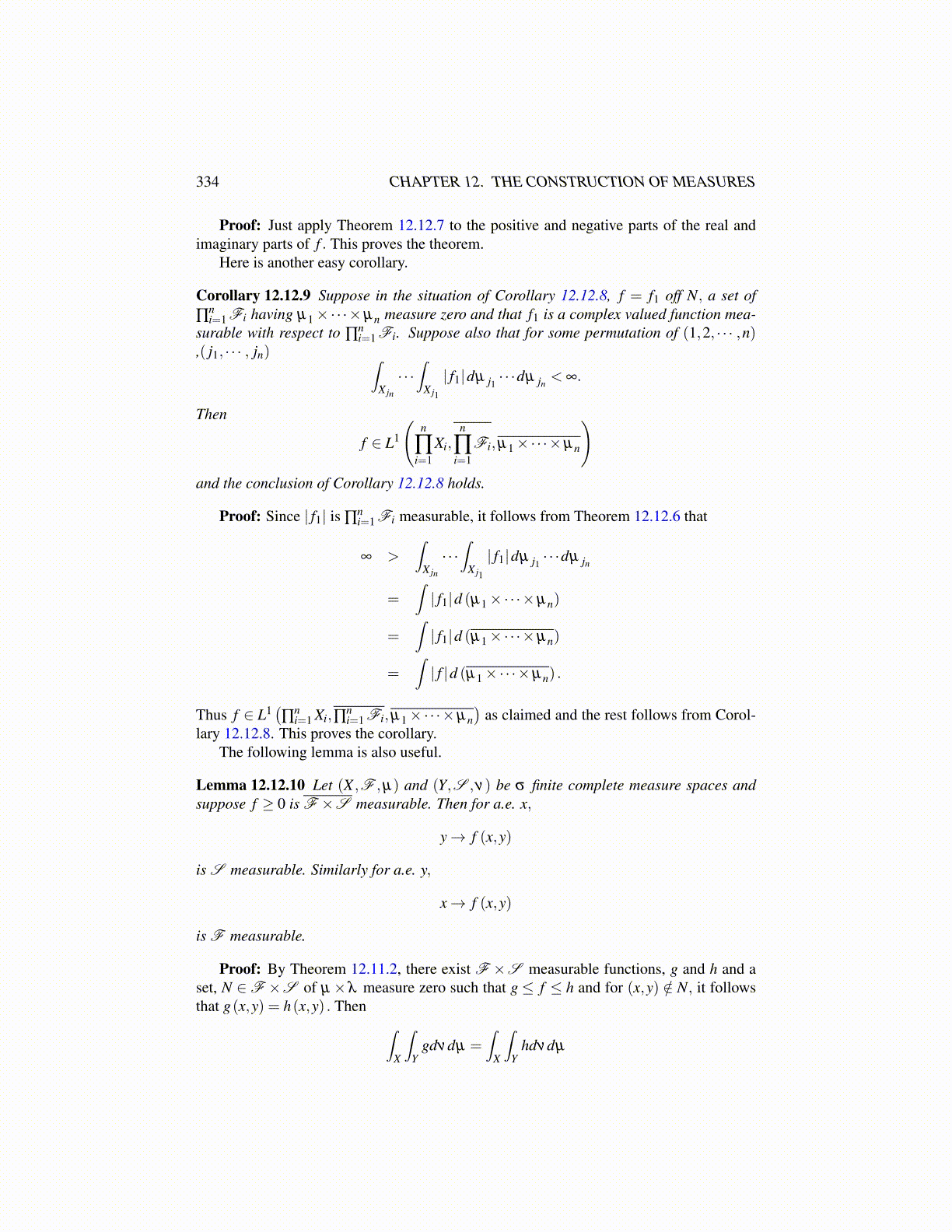
334 CHAPTER 12. THE CONSTRUCTION OF MEASURES
Proof: Just apply Theorem 12.12.7 to the positive and negative parts of the real andimaginary parts of f . This proves the theorem.
Here is another easy corollary.
Corollary 12.12.9 Suppose in the situation of Corollary 12.12.8, f = f1 off N, a set of∏
ni=1 Fi having µ1×·· ·×µn measure zero and that f1 is a complex valued function mea-
surable with respect to ∏ni=1 Fi. Suppose also that for some permutation of (1,2, · · · ,n)
,( j1, · · · , jn) ∫X jn
· · ·∫
X j1
| f1|dµ j1 · · ·dµ jn < ∞.
Then
f ∈ L1
(n
∏i=1
Xi,n
∏i=1
Fi,µ1×·· ·×µn
)and the conclusion of Corollary 12.12.8 holds.
Proof: Since | f1| is ∏ni=1 Fi measurable, it follows from Theorem 12.12.6 that
∞ >∫
X jn
· · ·∫
X j1
| f1|dµ j1 · · ·dµ jn
=∫| f1|d (µ1×·· ·×µn)
=∫| f1|d (µ1×·· ·×µn)
=∫| f |d (µ1×·· ·×µn) .
Thus f ∈ L1(∏
ni=1 Xi,∏
ni=1 Fi,µ1×·· ·×µn
)as claimed and the rest follows from Corol-
lary 12.12.8. This proves the corollary.The following lemma is also useful.
Lemma 12.12.10 Let (X ,F ,µ) and (Y,S ,ν) be σ finite complete measure spaces andsuppose f ≥ 0 is F ×S measurable. Then for a.e. x,
y→ f (x,y)
is S measurable. Similarly for a.e. y,
x→ f (x,y)
is F measurable.
Proof: By Theorem 12.11.2, there exist F ×S measurable functions, g and h and aset, N ∈F ×S of µ ×λ measure zero such that g ≤ f ≤ h and for (x,y) /∈ N, it followsthat g(x,y) = h(x,y) . Then ∫
X
∫Y
gdνdµ =∫
X
∫Y
hdνdµ